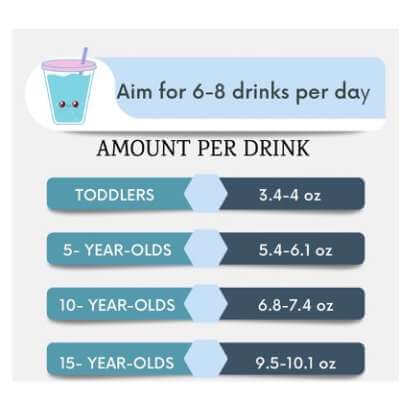Recognizing Constipation in your Kids and Action Steps to Resolve It
By Annie Close
MSOT, OTR/L
Did you know that your child could be pooping every day and still be constipated? If this is new information to you, you are not alone. Many parents are shocked to learn that their child is constipated, even with frequent bowel movements. When it comes to constipation, the consistency of bowel movements is just as important as the frequency of them. If your child experiences hard, painful, large, log-like or rabbit pellet -like poops, they are most likely constipated.
Constipation is something we want to address early in children as it can lead to other pelvic health concerns, including potty training difficulties, withholding, fecal & urinary incontinence, bedwetting, bladder urgency, and pelvic & stomach pain.
95% of constipation in children is considered functional constipation, meaning it has no root cause. The Rome IV diagnostic criteria for functional constipation is as follows:
“Must include 2 or more of the following occurring at least once per week for a minimum of 1 month with insufficient criteria for a diagnosis of irritable bowel syndrome:
- 2 or fewer defecations in the toilet per week in a child of a developmental age of at least 4 years
- At least 1 episode of faecal incontinence per week
- History of retentive posturing or excessive volitional stool retention
- History of painful or hard bowel movements
- Presence of a large faecal mass in the rectum
- History of large diameter stools that can obstruct the toilet” (Burgers, et al.)
If this sounds familiar to your situation, you are not alone. While there is no organic cause, the most common cause of functional constipation is withholding. Withholding tends to begin after a child experiences a hard, painful, or frightening bowel movement. The child recalls that pooping is uncomfortable, and next time they feel the urge to go, they hold it in. As the poop sits in the rectum, the water is drawn out and the stool becomes more solid. When the child finally goes, the poop hurts even more, which continues the withholding cycle.
The problem with ongoing withholding is that the rectum continues to store more poop in it and becomes stretched out. The more stretched it becomes, the more it loses its ability to sense when it is time to go. Thus, the child loses the natural urge to go causing more poop to build in the rectum. This vicious cycle can lead to what we call a “mega” rectum.
So, what can we do to help kids with constipation?
- Make sure they are drinking enough water daily
- Avoid constipating foods such as cheese, applesauce, peanut butter, marshmallow, banana, and tapioca
- Focus on a fiber-rich diet. Think of whole foods, such as beans, oats, peas, fruits, barley, avocado, carrots, celery, brown rice, etc. We want to focus on both soluble (soften stool) and insoluble (add bulk) fibrous foods to help keep stools loose
- Never put off a poo! Always encourage your little one to go. If they express the need, encourage them to go then. Reward the effort, not the outcome. Children don’t have control over whether or not they can go, so focus on rewarding sitting and trying to go
- Timed toilet sits. While we don’t always encourage timed sits, this tool can be helpful for children who experience chronic constipation. Timed sits can be very beneficial to give children the chance to go even if they can’t tell they need to due to poor rectal sensation. Encourage your little one to sit 15-20 minutes after each meal (breakfast, lunch, & dinner) for 5-10 minutes at a time. If your child attends school during the day, have them sit right when they get home instead of lunch time. Reward the effort, not the results
- Encourage proper toilet position. Children should be sitting with their feet and bottom well supported (use a toilet seat insert if your child is too small). Their knees should be higher than their hips and wide apart to help the pelvic floor muscles relax. They should sit with a straight back and leaning slightly forward, helping generate the right pressure in their tummy to push out the poop
- Work with your child’s doctor to understand what sort of laxatives or stool softeners could help with a bowel cleanout. Many children will need to do a bowel cleanout and be on some sort of stool softener for awhile to help flush the rectum out and let it shrink back down to its normal size
- Work with a pediatric pelvic floor therapist. We specialize in helping children manage constipation and learn to connect to their pelvic floor muscles. Treatment is individualized to your child’s needs

Want to learn more or feel like you need more help? Reach out for a free consultation. We provide virtual services for families everywhere.
Website: www.ownyourpelvichealth.com
Contact: hello@ownyourpelvichealth.com
Annie Close started her career as a paediatric occupational therapist, working at children’s hospitals and outpatient clinics. Her passion for pelvic health sparked when she realized how few resources there are to help children with toileting issues, leading her to specialize in paediatric bowel and bladder disorders.
Reference:
Burgers, R.E., Mugie, S.M., Chase, J., Cooper, C.S., von Gontard, A., Rittig, C.S., Homsy, Y., Bauer, S.B. and Benninga, M.A., 2013. Management of functional constipation in children with lower urinary tract symptoms: report from the Standardization Committee of the International. Children’s Continence Society. The Journal of urology, 190(1), pp.29-36.

